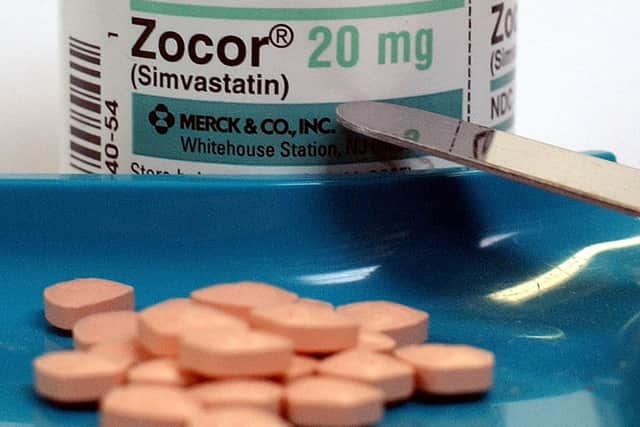What are statins? What drugs are used for, side effects explained - and do they cause muscle pain
and live on Freeview channel 276
Millions of people with a future risk of heart attack and stroke could be able to choose to take statins under new guidance from the National Institute for Health and Care Excellence (NICE).
NICE have published new draft updated guidance on the use of statins, suggesting the medication should be offered to people in lower risk thresholds.
Advertisement
Hide AdAdvertisement
Hide AdStatins are one of the most commonly prescribed medications in the UK, with over 8 million people taking the drug which helps to lower cholesterol.
There has been concern that the medication can cause muscle pain or weakness, however a study released in August 2022 called for information regarding this side effect to be changed.
So what could these potential changes mean? Here’s everything you need to know about the latest proposals from NICE.
What are statins?
Statins are medications that can help to lower the level of cholesterol in your blood.


What are statins used for?
Advertisement
Hide AdAdvertisement
Hide AdStatins are used to reduce the level of low-density lipoprotein (LDL) cholesterol in the blood. LDL is often referred to as “bad cholesterol” and is associated with a greater risk of developing cardiovascular disease such as coronary heart disease, angina, heart attack, congenital heart disease, hypertension and stroke.
What has NICE said about statins?
NICE have published new draft updated guidance on the use of statins to prevent heart disease and strokes, suggesting the medication should be offered to people in lower risk thresholds.
Current guidelines indicate statins should be offered to anyone with a “a 10% or higher risk over 10 years”, however following risk assessment and new evidence on the side effects of statins, this could be extended, potentially offering millions more people the medication in the UK.
Reported by PA Media, NICE Spokesman Paul Chrisp explained: “What we’re saying is that for people with a less than 10% risk over 10 years of a first heart attack or stroke, the decision to take a statin should be left to individual patients after an informed discussion of benefits and risks.
Advertisement
Hide AdAdvertisement
Hide Ad“The evidence is clear, in our view, that for people with a risk of 10% or less over 10 years, statins are an appropriate choice to reduce that risk.” He added: “We are not advocating that statins are used alone.”
Whilst Professor of Metabolic Medicine at the University of Glasgow, Naveed Sattar, said: “I agree statins are well proven to lower cardiovascular outcomes cost effectively at thresholds less than 10%, so this new guidance makes sense.
“However, we need also to concentrate more on helping people live healthier lives and not just longer with more diseases.” Professor Sattar added: “Hence, parallel work to help people improve their lifestyles, walking more, eating better, is needed to maximise health gains. More people on statins alone will not be enough to meaningfully improve the health of the nation.”
Can statins cause muscle pain?
Muscle pain and weakness are listed as statin side effects on the NHS website. However, researchers of a study conducted in August 2022 have called for this information to be changed.
Advertisement
Hide AdAdvertisement
Hide AdProfessor Colin Baigent, director of the Medical Research Council Population Health Research Unit at the University of Oxford, and joint lead author of the study, said: “These findings suggest that if a patient on statins reports muscle pain, then it should first be assumed that the symptoms are not due to the statin and are most likely due to other causes.”
He added: “Drug regulators around the world are concerned to keep patients safe.
“And up until now they’ve thought that doing that is best served by having these warnings about the possibility of muscle pain.
“What we’ve shown is actually that that’s not the best way to serve patients because patients take that information, and the moment they develop muscle pain, they suspect the statin and that leads many of them to stop the statin, which actually puts them in harm’s way.
“And so we’ve got to try and change the balance of that, and work with the regulators to do a better job of communicating the risks.”
Comment Guidelines
National World encourages reader discussion on our stories. User feedback, insights and back-and-forth exchanges add a rich layer of context to reporting. Please review our Community Guidelines before commenting.
